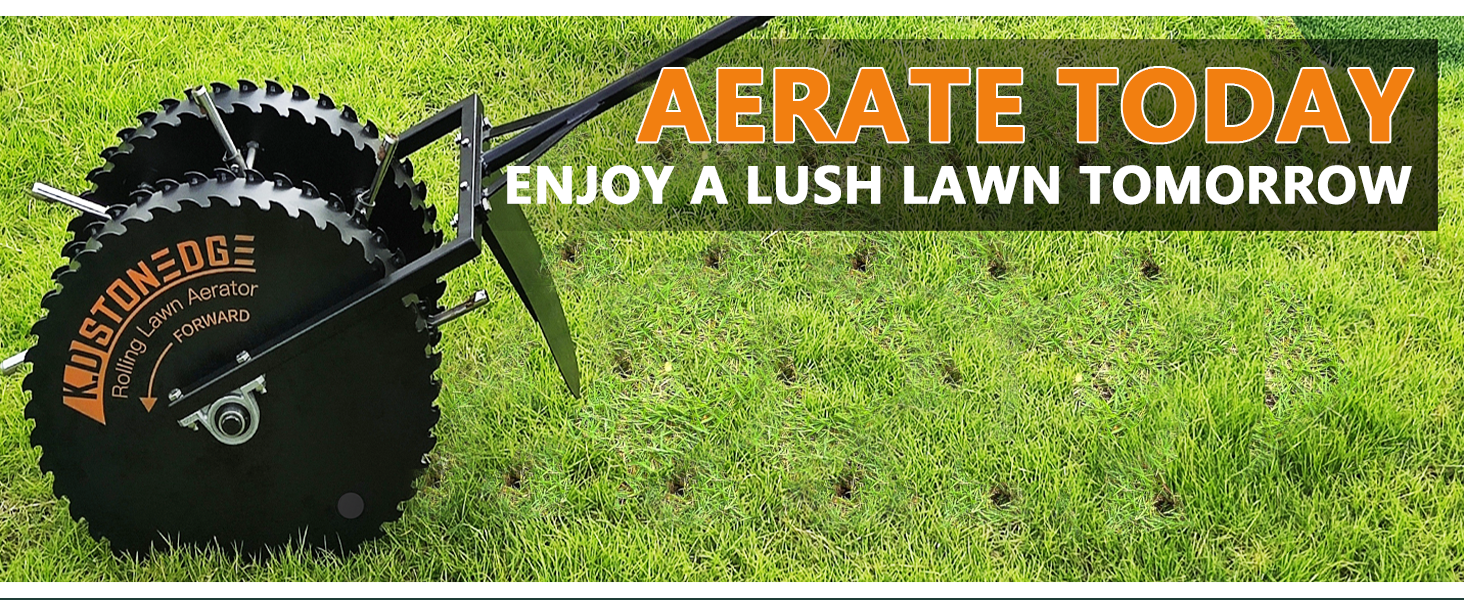Don’t Aerate Your Lawn Until You Read This: Timing Is Everything!
If you’ve been thinking about aerating your lawn to fix patchy grass or stubborn bare spots, hold up—because doing it at the wrong time can do more harm than good.
Yep, aerating helps your lawn breathe, grow deeper roots, and absorb nutrients better… but only if you do it at the right time.
In this guide, you’ll learn exactly when to aerate—based on your grass type, your region, and the current season—so you don’t waste your weekend (or your money).
 Click Here For Best Aeration Tool
Click Here For Best Aeration Tool
Why Aeration Matters—But Only at the Right Time
When done right, it can:
- Improve root growth
- Boost nutrient absorption
- Help water soak in evenly
- Thicken up your lawn over time
But if you aerate too early, your grass won’t be ready to recover. If you aerate too late, you might stress the lawn right before dormancy or heat.
Timing is everything.
Cool-Season vs. Warm-Season Grasses: Know What You Have First
Before you mark the calendar, you need to know what type of grass is in your yard.
Here’s a quick breakdown:
Cool-Season Grasses (Found mostly in northern climates)
These grasses thrive in spring and fall, when temperatures are milder.
Warm-Season Grasses (Popular in southern and warmer regions)
- Bermuda
- Zoysia
- St. Augustine (how to thicken this grass up)
- Centipede
These grasses grow strongest in the late spring and summer.
If you’re unsure, check with a local garden center—or just observe your lawn: when does it grow most vigorously?
The Best Time to Aerate Your Lawn (By Grass Type)
Cool-Season Grasses
- Best Time: Early fall (September is ideal)
- Second-best: Early spring, before growing season kicks in
Why fall? Your grass is actively growing and can recover quickly before winter dormancy. Plus, soil is moist but not frozen.
Warm-Season Grasses
- Best Time: Late spring to early summer (May–June)
This is when these grasses are growing strong and can handle the disruption of aeration while bouncing back fast.
Avoid aerating in peak summer heat or during droughts—it can put too much stress on the lawn.
Does Your Lawn Even Need Aerating?
Not every lawn needs it every year—but yours might if:
- You see water pooling after rain
- The soil feels hard to the touch
- There’s visible thatch buildup (over 1/2 inch thick)
- The grass looks thin or worn in high-traffic areas
- Quick test: Try pushing a screwdriver into the soil. If it’s tough to get in, your lawn is likely compacted.
What to Do Before and After You Aerate
Timing matters—but so does prep and aftercare. Here’s how to get the most out of your aeration effort:
Before Aerating
- Mow short (but don’t scalp it) – learn more about about mow heights.
- Water the day before so the soil is soft – best times to water the lawn.
- Mark sprinkler heads or shallow utility lines
After Aerating
- Leave the plugs on the lawn—they’ll break down naturally
- Overseed if needed, especially in bare areas
- Fertilize lightly to feed new growth
- Water consistently for a week or two afterward
Pro tip: Pairing aeration with overseeding in the fall? That’s chef’s kiss for cool-season lawns.
Click Here For Best Aeration Tool
Bonus Tips for Lawn Aeration Success
- Rent a core aerator instead of using spike shoes (core aerators remove soil plugs, which is more effective)
- Don’t aerate if your lawn is under drought stress or too soggy
- Consider aerating once a year if your lawn sees a lot of foot traffic
Final Thoughts: The Right Time Changes Everything
Aeration works. But when you do it at the right time, it supercharges your lawn’s ability to heal, grow, and thrive.
So before you rent an aerator or book a lawn care service, double-check your grass type and local season. A couple of weeks too early or too late can make all the difference.
Right season. Right prep. Right aftercare. That’s the lawn care trifecta.
- How to Sharpen Mower Blades Like a Pro: Safe, Simple Steps for a Cleaner Cut
- Centipede Grass: The Low-Maintenance Lawn for Warm Climates
- Bermudagrass: The Tough, Sun-Loving Lawn That Thrives in the Heat
- Zoysiagrass: The Elegant, Durable Lawn for Warm and Transitional Climates
- Mowing Height Made Simple: How to Pick the Right Height for Your Lawn (Any Grass, Any Climate)
